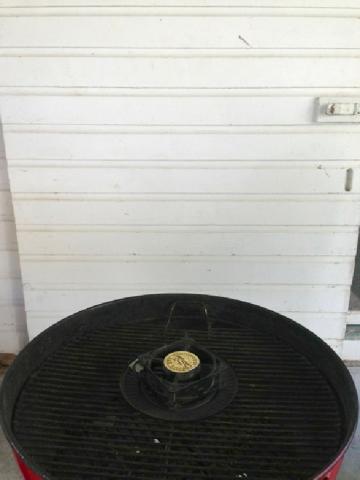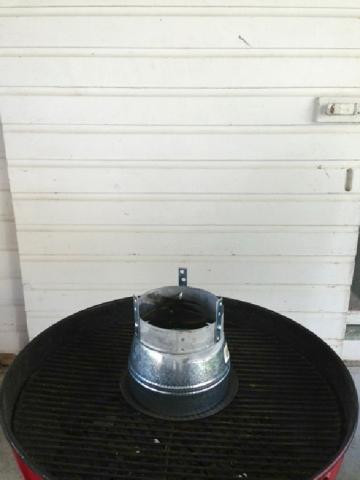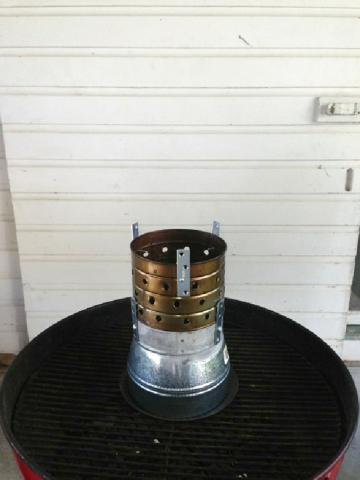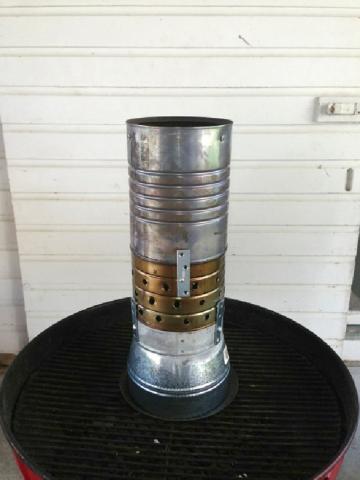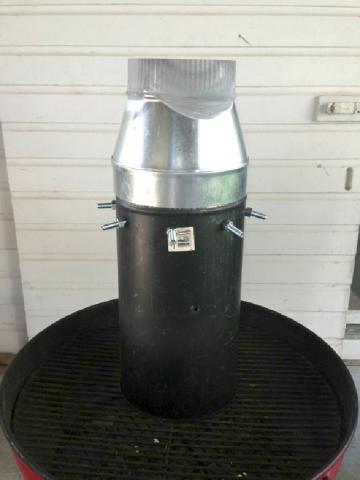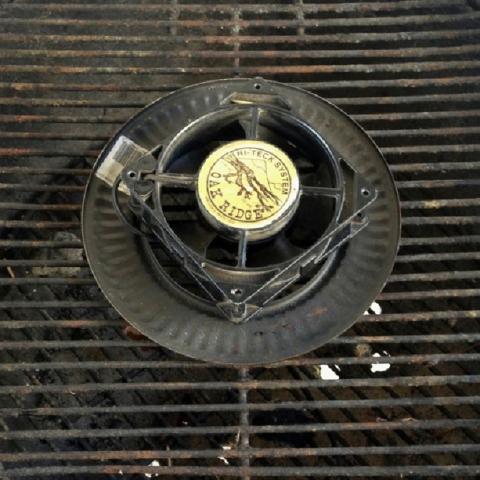A few more pictures to clarify how the Rim Fire iCan is built. It is quite simple.
Materials:
- One fan
- Four standard stove pipe parts
- Two tin cans
- One metal plate
- Three angle brackets to support the burner plate
- Six bars to align the cans when stacked.
- Some screws, nuts, and bolts.
To Build the Stove
- The fan is set facing up on an 8 inch stove pipe trim collar - made in Canada
This is a standard stove pipe item.
The base acts to keep the secondary air from escaping out the bottom. - The fan is then enclosed by a 7" to 6" stove pipe reducer.
- Next the primary/secondary air mixer is added.
Made from a 4 lbs tuna fish can.
This is more or less a fixed part of the system. It is independent of the reactor operations. - Next the fuel chamber/pyrolysis reactor is added.
Made from a 3 lbs Costco coffee can.
This is the only can that gets extremely hot. It should be made of a good stainless steel. - Lastly, a length of 8" stove pipe is added. it is capped by a standard 8" to 6" reducer.
The bottom of the stove pipe sits just inside the rim of the trim collar, which acts to more or less seal the bottom of the system.
The bolts are only there to correct for a bad guess and would not normally be used.
The secondary air flowing up the inside of this pipe helps to keep it cooler.
In operation, the segment of the pipe below the reactor can is very cool. - Detail of the fan set on the trim collar.
Note: The fan never gets hot.
It is nearly impossible for hot bits to fall thru the 5/64ths primary air holes.
To Operate
- I load the fuel chamber. Add starter. Place the burner plate on its supports & center it;
- Place assembled and loaded reactor can on the primary/secondary air mixer can;
- Lower the stove pipe outer shell over the unit. Center it.
- Ignite the starter via the gap between the reactor side and the edge of the burner plate.
- To unload the reactor at the end, I simply reverse these steps - using pliers and insulated gloves.
- With a too fast, single speed fan, a reasonable fuel load of 1,500 grams of wood pellets will last just under an hour.
Cost of this, if wood pellets are $300 per ton, is about 50 cents per run. Fine in the US market, but probably too expensive in many places.
Tuning this to work with rice hulls, coffee husks, etc would be importantTuning this to work with rice hulls, coffee husks, etc would be important.
Unfortunately, I do not have access to rice hulls or coffee husks for testing.
Total height of the assembled unit is just over 54 CM.
All in all, this is pretty simple to build and operate.
Jock Gill
Air Jordan 1

